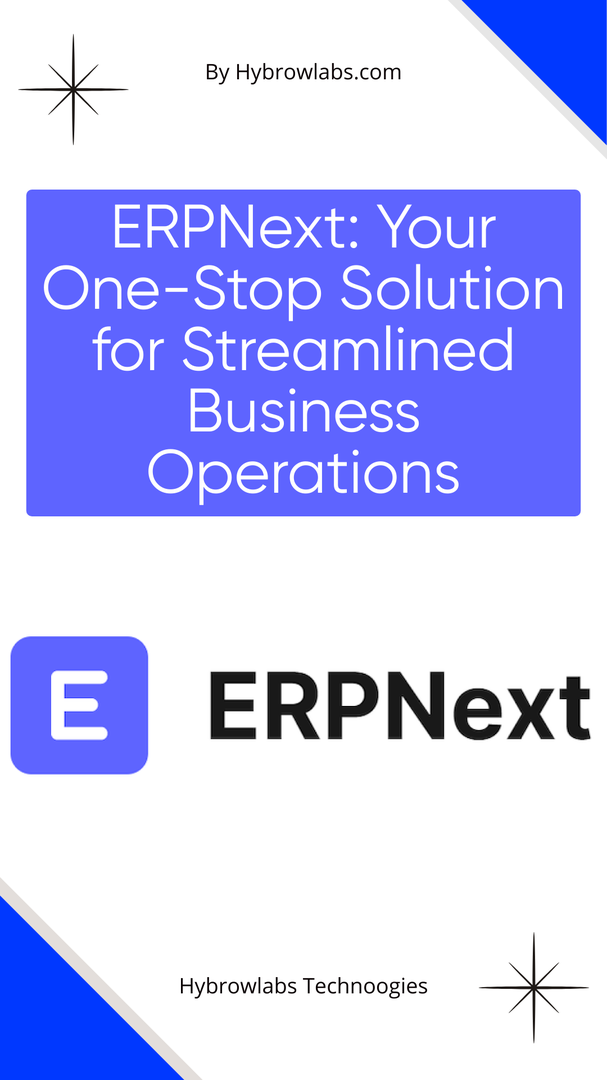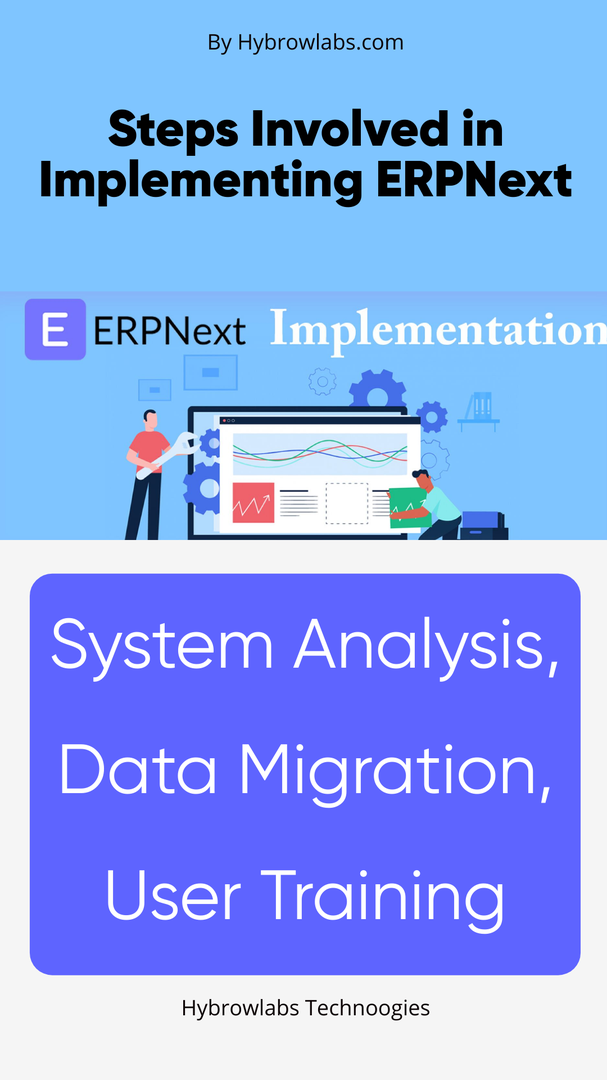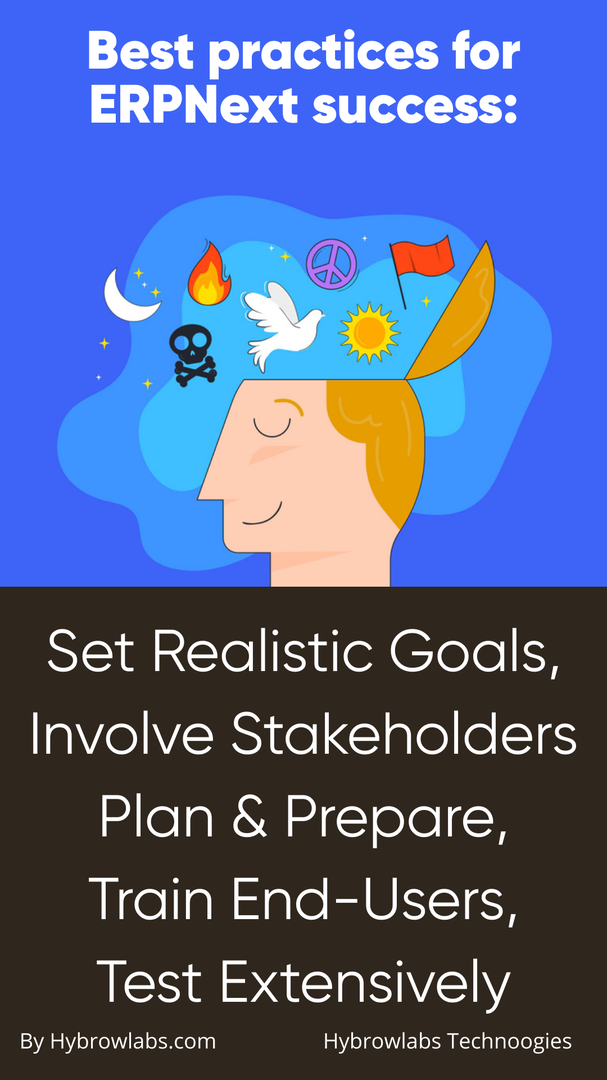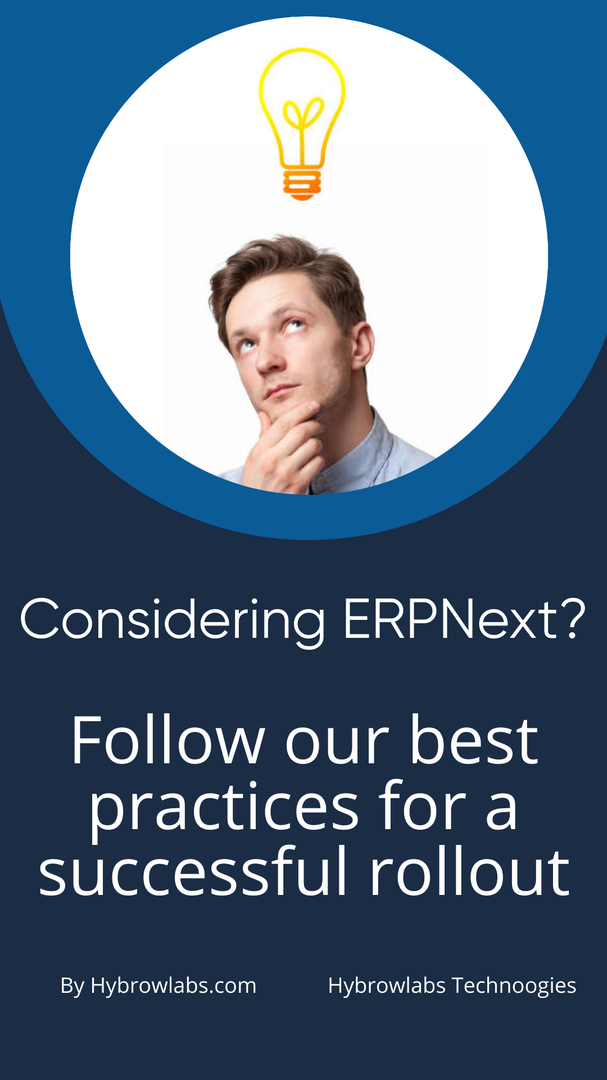
Enterprise Resource Planning (ERP) systems have become essential for organizations to streamline their business processes & improve overall operational efficiency. ERPNext is an open-source, web-based ERP system that offers a wide range of features to help businesses manage their operations effectively. However, implementing an ERP system can be a challenging process that requires careful planning, execution, & monitoring to achieve a successful rollout. In this article, we will discuss the key steps involved in implementing ERPNext, best practices for a successful rollout, & real-world examples of companies that have successfully implemented ERPNext.
Key Steps Involved in Implementing ERPNext:

Implementing an ERP system such as ERPNext involves several key steps, including system analysis, data migration, & user training.
1. System Analysis:
Before implementing ERPNext, it is crucial to conduct a thorough analysis of your business processes to identify areas that need improvement. This includes identifying the core functionalities that are required for your organization, mapping out your business processes, & identifying any customizations that may be needed.
2. Data Migration:
Once the system analysis is complete, the next step is to migrate your existing data to ERPNext. This involves extracting data from your existing systems & transforming it to fit the format required by ERPNext.
3. User Training:
After the data migration is complete, the next step is to train your users on how to use the new system effectively. This includes providing training on the core functionalities, customizations, & any new processes that are introduced as part of the implementation.
Best practices for a successful ERPNext implementation:

Enterprise Resource Planning (ERP) software has become an integral part of modern businesses. ERPNext is an open-source ERP solution that can help organizations streamline their operations, improve efficiency & increase productivity. However, ERPNext implementation is a complex process that requires careful planning & execution to ensure a successful rollout. We will discuss five best practices for a successful ERPNext implementation.
1. Set Realistic Goals:
The first step in any successful ERPNext implementation is to set realistic goals. It is important to define what you want to achieve with the ERP system & ensure that your goals are achievable. This involves understanding your current business processes & identifying areas that need improvement. You should also consider the capabilities of ERPNext & ensure that it meets your requirements. Setting unrealistic goals can lead to disappointment & frustration, & ultimately, a failed implementation.
2. Involve All Stakeholders:
ERPNext implementation is not just an IT project; it is a business project that involves multiple stakeholders. It is important to involve all stakeholders, including department heads, end-users, & IT staff, in the implementation process. This helps to ensure that everyone is on the same page, understands the goals of the project, & is committed to its success. It also helps to identify potential roadblocks & challenges early on in the process, which can be addressed before they become major issues.
3. Plan & Prepare:
Proper planning & preparation are essential for a successful ERPNext implementation. This involves creating a project plan that outlines the scope of the project, timelines, & milestones. It also involves allocating resources, including personnel, hardware, & software, & ensuring that everyone has the necessary training & support to use the system effectively. Testing the system thoroughly before the rollout is also critical to ensuring a smooth implementation.
4. Train End-Users:
End-user training is essential for a successful ERPNext implementation. The system may be complex, & end-users may be resistant to change. Training should be provided to all end-users to ensure that they understand how to use the system effectively. This includes training on how to enter data, run reports, & access support. It is important to provide ongoing training & support to ensure that end-users continue to use the system effectively & efficiently.
5. Test Extensively:
Testing is a critical component of any ERPNext implementation. The system should be tested thoroughly to ensure that it meets your requirements & is free of bugs & errors. Testing should be performed at various stages of the implementation process, including during the development phase, before rollout, & after rollout. It is also important to perform user acceptance testing to ensure that end-users are satisfied with the system & that it meets their needs.
Real-world examples of companies' ERPNext Implementation & its measurable benefits:

1. Define Business Requirements & Objectives:
Before implementing ERPNext, it is essential to define your business requirements & objectives. This step involves identifying the key business processes that the software will automate, the data that needs to be captured & analyzed, & the specific goals you want to achieve. For instance, you may want to improve inventory management, reduce lead times, or enhance customer satisfaction.
Real-world example: The Indian-based fashion brand, Anouk, implemented ERPNext to manage their end-to-end supply chain & inventory management. As a result, the company reduced its inventory holding costs by 60%, improved its order fulfillment cycle time by 40%, & increased its sales by 30%.
2. Conduct a Gap Analysis:
Once you have defined your business requirements & objectives, the next step is to conduct a gap analysis. This process involves identifying the gaps between your current business processes & the capabilities offered by ERPNext. It helps to identify the areas where customization or integration may be required & the potential impact on existing systems & processes.
Real-world example: The Dubai-based logistics & transport company, Dulsco, implemented ERPNext to automate their financial, procurement, & HR processes. After conducting a gap analysis, the company identified the need for customization to integrate its existing fleet management system. As a result, the company was able to streamline its operations, reduce manual errors, & improve financial transparency.
3. Plan & Manage Change:
ERPNext implementation involves a significant change in the way your business operates. To ensure a smooth rollout, it is crucial to plan & manage change effectively. This step involves identifying the potential impact of ERPNext on your business processes, identifying stakeholders, & communicating the changes effectively.
Real-world example: The US-based nonprofit organization, The Glendale Educational Foundation, implemented ERPNext to automate their financial & accounting processes. The organization conducted extensive training & communication sessions for its staff, board members, & donors to ensure a smooth rollout. As a result, the organization improved its financial transparency, reduced manual errors, & increased donor satisfaction.
4. Focus on Data Quality & Migration:
Data quality & migration are critical factors that can impact the success of ERPNext implementation. It is essential to ensure that the data entered into ERPNext is accurate, complete, & consistent with your existing systems. It is also crucial to migrating data from your legacy systems to ERPNext effectively.
Real-world example: The US-based cosmetics company, Dr. Bronner's, implemented ERPNext to streamline their inventory management & supply chain processes. To ensure data quality & migration, the company conducted extensive testing, data cleansing, & data validation. As a result, the company was able to reduce inventory holding costs, improve its order fulfillment cycle time, & increase customer satisfaction.
5. Ensure User Adoption & Training:
Successful ERPNext implementation requires user adoption & training. It is crucial to ensure that your staff is trained & comfortable with using the software to maximize its benefits. It is also essential to provide ongoing support & assistance to users.
Real-world example: The UK-based charity organization, WaterAid, implemented ERPNext to automate their financial & accounting processes. To ensure user adoption & training, the organization provided extensive training & support to their staff, volunteers, & partner organizations.
Conclusion:

ERPNext is a powerful ERP solution that can help businesses streamline their operations, reduce costs, & improve efficiency. However, implementing ERPNext can be challenging if not done properly. By following the best practices outlined in this article, businesses can increase the chances of a successful ERPNext implementation. These practices include defining goals & objectives, engaging stakeholders, evaluating current processes, planning the implementation, customizing the solution, providing adequate training, & testing the implementation. Services like Hybrowlabs ERPNext Development Service can provide valuable guidance and support for a successful ERPNext implementation.
If you are considering an ERP solution for your business, ERPNext is an excellent option. It's a cost-effective, customizable, & powerful solution that can help you streamline your operations & improve efficiency. However, to ensure a successful implementation, it's crucial to follow the best practices outlined in this article. By doing so, you can achieve a successful rollout & start reaping the benefits of ERPNext.
Frequently Asked Questions (FAQ)
1. What are the benefits of implementing ERPNext?
Implementing ERPNext can offer several benefits to businesses, including streamlined operations, increased efficiency, reduced costs, improved decision-making, & better collaboration. With ERPNext, businesses can automate their core processes, such as accounting, inventory management, HR management, project management, & more, & gain better visibility & control over their operations.
2. How long does it take to implement ERPNext?
The time it takes to implement ERPNext depends on several factors, including the size & complexity of your business, the scope of the implementation, the customization required, & the availability of resources. Generally, ERPNext implementations can take anywhere from a few weeks to several months.
3. What resources are required for a successful ERPNext implementation?
A successful ERPNext implementation requires several resources, including a dedicated project manager, a team of experts with experience in ERPNext implementation, an adequate budget, & sufficient time. It's also important to involve stakeholders in the implementation process & provide comprehensive training to end-users.
4. How do you customize ERPNext to meet your business requirements?
ERPNext is a highly customizable solution that allows businesses to tailor the system to their specific needs. This may involve customizing workflows, forms, reports, & other features. To customize ERPNext, businesses can use the built-in customization tools or work with a certified ERPNext partner.
5. How do you measure the success of an ERPNext implementation?
To measure the success of an ERPNext implementation, businesses should define clear goals & objectives at the outset & track their progress against these goals. Businesses can also track key performance indicators (KPIs) such as cost savings, productivity gains, & customer satisfaction. It's also important to gather feedback from end-users & stakeholders & make necessary adjustments to the system based on this feedback.






a3dc85.jpg)
.jpg)
fd8f11.png)


.jpg)
.jpg)